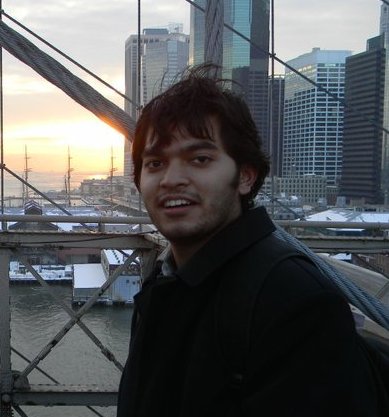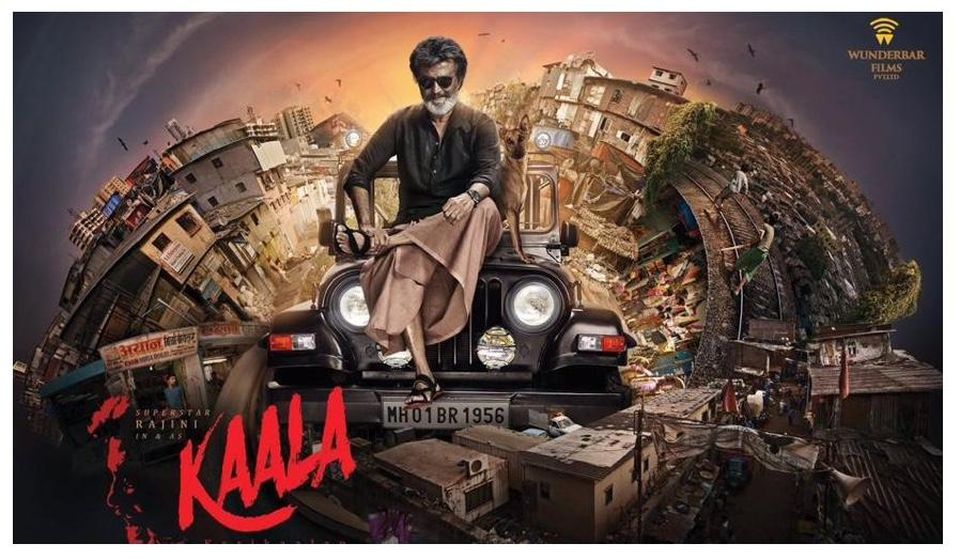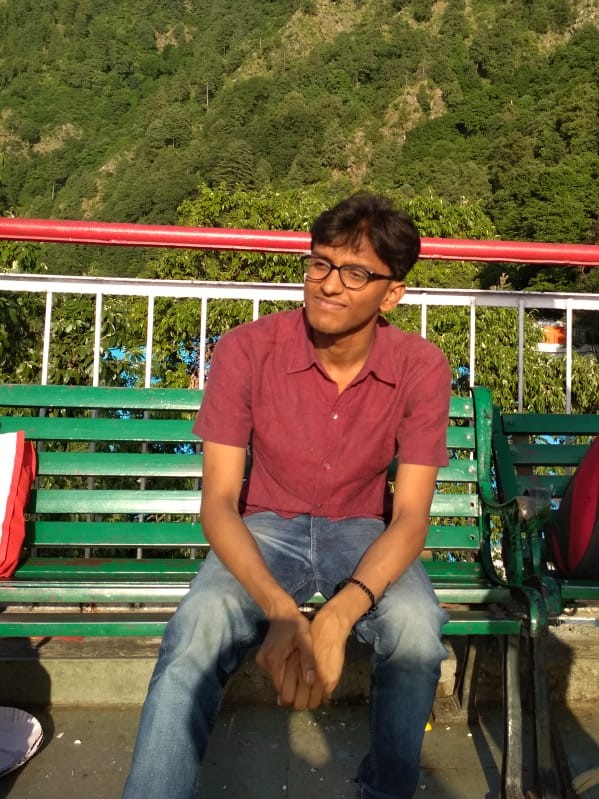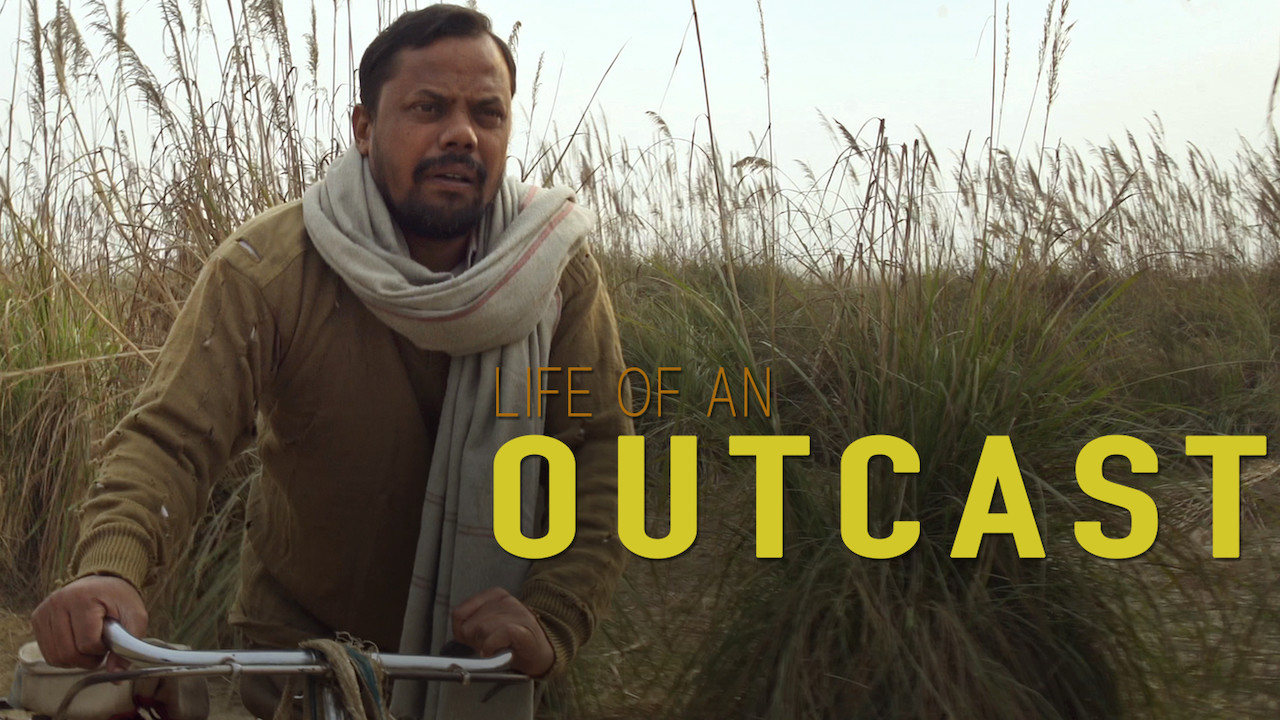Bishaldeb Halder
 ‘It is true that intellect by itself is no virtue. It is only a means and the use of means depends upon the ends which an intellectual person pursues. An intellectual man can be a good man, but he can easily be a rogue. Similarly, an intellectual class may be a band of high-souled persons, ready to help, ready to emancipate erring humanity, or it may easily be a gang of crooks or a body of advocates of a narrow clique from which it draws its support.’ – Dr B.R. Ambedkar, Annihilation of Caste (1936)
‘It is true that intellect by itself is no virtue. It is only a means and the use of means depends upon the ends which an intellectual person pursues. An intellectual man can be a good man, but he can easily be a rogue. Similarly, an intellectual class may be a band of high-souled persons, ready to help, ready to emancipate erring humanity, or it may easily be a gang of crooks or a body of advocates of a narrow clique from which it draws its support.’ – Dr B.R. Ambedkar, Annihilation of Caste (1936)
Brahman feminists and their non-brahman acolytes have been griping about “dalit patriarchy” and “dalit masculinity” for some time now. Over the last few years, I have had my interest piqued by it, engaged with it earnestly to little avail, seen it dismissed, summarily and in detail, by anti-caste activists and thinkers with fascination, and finally thought it to be of little relevance to me. That is usually what brahmans do: make their fables appear worthy of others’ time and interest. Or alternatively, make them appear too esoteric to actually be of everyday relevance.
Examining “dalit masculinity/patriarchy”
What does “dalit masculinity/patriarchy” contain? What is it based on? Empirical observation? Ethnographic analysis? Structural analysis? Does it, as an interpolation, follow logically from the material conditions obtaining in caste society? Have scholars working on it seen it as a product of labour, spatial geography, habitat, livelihood, consumption patterns, levels of education, annual incomes, debt levels, land ownership or lack thereof, or any other socio-economic indicator and drawn any correlations or causal links, thereby?
From what I gather, they seem to have more or less concluded from ethnographic analysis of village economies that changing material conditions offering an increasing choice of livelihood for “dalits”, including increased geographical mobility (more baldly, “migrant labour”), increased wages/income, a yawning gap between a consumerist culture in villages and their own stagnant social status, have together led to a rising caste consciousness in comparison to earlier generations of “dalits”. These factors have brought present day “dalit” men into aggressive conflict with their relatives, including elders and partners. Earlier, of course, their material conditions remained the same for over centuries and so there was no resultant assertion and aggression in their masculinity.
Unchanging, and more importantly, favourable material conditions enabled upper castes to use violence to enforce their control all through this period. But even though material conditions for “dalits” are rapidly changing — inciting their latent aggression and ire at their social status which they are venting out on their family members, particularly female ones — these changes have not inspired any such behaviour among upper castes. They have not, of course, begun to exert more novel and polished forms of violence to maintain their control.
One would be quite right to think such a postulation sounds like a “poor brahman” priest bemoaning the depths of the kaliyuga the world is in at present. This sort of reasoning is the obverse side of that of brahman sociologist M.N. Srinivas’ theory of sanskritisation. All that Srinivas’ theory inspires now is incredulity the first time, and increasingly derisive snorts and snarls afterwards. Why this theory of “dalit masculinity” finds any sort of serious consideration is baffling.
There must be at least some acknowledgement in this theory of a longue durée view of social and material conditions that “dalits” live in. Do “dalit” festivals, rituals, myths, oral and recorded histories indicate the presence of any form of patriarchy or masculinity unique to them? Do the material conditions that they have lived in historically not have any bearing on their current ones? Are their current material conditions just a bolt from the blue? There is really an embarrassment of historical record on the anti-caste assertions of “dalits”, the avarnas and various other non-brahman communities. Is all of it to be simply ignored in favour of some two-decade old feminist theory? What sort of approach has led them to conceptualise and seek to examine the phenomenon of “dalit masculinity/patriarchy” as a locus of academic enquiry? Is it a historical one? A sociological one? Economic? Cultural? Genetic? Astrological? Numerological?
The only way that dalits— I am not even going into the socio-political history of this and other forms of nomenclature, both self-proclaimed and government-prescribed—can be considered to be homogenous is in their common position that they occupy in the system of castes taken as a whole in this caste society. There is really no other way to consider all dalits or scheduled castes— spread over 4 million square kilometres across four sovereign nation states and a bewildering variety of geographical, climatic, material and cultural conditions—to be a homogenous community. Likewise, the only way in which brahmans are referred to, in critical, anti-caste thought, is their particular, apical position they occupy in the whole system of castes in caste society. Apart from that, it must be borne in mind that the origin of the caste system lies in the brahman class.
Retrospectively placing brahman feminists
Endogamy is the sine qua non for brahman existence. Babasaheb, in his paper ‘Castes in India: their mechanism, genesis and development’1 delineated with exactitude how the superimposition of endogamy on exogamy alone results in the formation of a caste. The first class of people in subcontinental society to execute this process of caste-formation was the brahman. Sati, enforced widowhood with its attendant debasement of women’s appearances and status, and child marriage were the three regular methods of enforcing such endogamy. Babasaheb categorically stated that all these three practices were to be found in the greatest measure among brahmans. In addition to these, there were other methods in existence as well: willful penalization and elimination of inter-caste couples, forcing young widows into servitude or harlotry, enforcement of social death, all to deal with exceptional circumstances as and when they would arise. As lawmakers, ministers, priests—in short fanatical upholders of sanatan dharma—brahmans obviously held power over both the corporeal and spiritual fates of the transgressors of said dharma.
Bengal, as is well known, has been the most salient premise for sati. What is less well known— to non-bengalis, at any rate— is the kulin system of social gradation that was prevalent there. The word generally means highborn, of course. In Bengali caste society specifically, to attain a kulin status, one had to prove that each and every member of one’s family, on either side in every generation, was genealogically a brahman upto at least fourteen generations retrospectively. I shall leave readers to appraise the damage caused to society in the quest for the attainment of such a status via the methods described above. The bangla phrase ‘choddo purush’ (14 generations) is commonly delivered as a familial threat (‘I will annihilate your choddo purush‘) to the day I write this. Only one who is a Mukherjee, Banerjee, Chatterjee or Ganguly is considered a kulin brahman. The endogamy practised by other upper caste non-brahman communities is largely imitative of brahmans, as Babasaheb points out in the paper. So it is clear that the peculiar form of patriarchy that exists in this caste society is originally, and reflective of, brahman methods to enforce endogamy.
From the foregoing discussion, it must be clear that the enforcement of endogamy i.e. caste is an exercise masculine in nature and everlastingly patriarchal in intent. The overwhelming loss of women’s lives, dignity and status is not simply happenstance or that favourite of savarna nationalists: collateral damage. It may seem doltish to belabour the point, but necessary as well, considering we are dealing with brahman feminists here, as well as several others in their thrall who, as such, have long taken leave of their critical faculties. Precious pedants among them should call it brahman patriarchy, instead of the woolly-headed ‘brahmanical patriarchy’. Those who have read Babasaheb and have some idea of how caste society works already know what it is called: brahmanism.
How are we to see such projections against the sordid history of brahmans with regard to their own community? How do present-day brahmans, particularly feminists, reconcile themselves with being part of a historical tradition that enforced, through religious decree, the burning of widows and the general abasement of women, including brahman women, all for maintaining their own supreme social status? What is the psychological fallout of such knowledge? Is a projection like “dalit masculinity/patriarchy” a result of such unresolved historical trauma that brahmans cannot face up to or confess? Does it stem from an existential vexation at their inability to negotiate or haggle for more egalitarian treatment from males of their own class? What kind of a class is one that deploys a projection of its own self-devouring, self-arrogating behaviour onto lower classes in order to deflect any scrutiny of such behaviour so as to let it continue unabated, alongside the constant attempts at pathologisation of lower classes?
It is a historical imperative i.e. an imperative driven by the implacable, forward passage of time and the occurrence of events in its flow linked causally, that brahman feminists ought to confront and recognise the blighting patriarchy, misogyny and genocide at the heart of the brahman class first and foremost. Due to structural reasons stated above, it is equally a social imperative.
How far does the logic of “dalit masculinity” go?
A specious process followed by brahman academia is to formulate theories based on available evidence. They do not stop to examine the evidence for the existence of a causal link between it and their hypothesis. The theory of “dalit masculinity/ patriarchy” is a classic case of such specious reasoning. Let me use an analogy to explain my point.
The role of the Jews in the development of banking in Europe during the Renaissance is familiar to many. The Jews grew into such a role, partly because they were not allowed into other professions (or spaces) occupied by the Gentiles, and partly owing to their own practice of usury in relation to Gentiles. The Gentiles, despite their prejudice against the Jews— not least due to their practice of usury, which they considered a sin—grudgingly used their services for their capital needs, thereby giving rise to banking as an essential service. By the 18th century, several Jewish families had developed huge banking networks, serving the most prestigious clients of the time such as royal families and the Vatican. Their sweeping influence across kingdoms as exerted through these banking networks meant that they profited greatly during wars and other socio-political crises. Amidst the rising tide of nationalist chauvinism at the turn of the 20th century, such allegedly self-seeking, mercenary manoeuvring was considered anathema. This, combined with older anti-Semitic prejudices, especially after the devastating effects of World War I, culminated in the unprecedented anti-Semitic mobilisations in continental Europe of the 1930s CE.
Now this is rightly considered to be one of the most extreme cases of genocidal projects based upon racist assumptions. Anyone arguing about whether available evidence supports the conclusion reached by the architects of such a project in this case would be rightly be called a Nazi. But in the case of “dalit masculinity/patriarchy”, they have already produced a hypothesis, passed it off as a theory and published it in academic journals, all under the pretext of having found evidence. Indeed, this is one of the defenses of their theory: that there is evidence to support it. There is a lot of evidence about people who are White Anglo-Saxon Protestants dominating the American banking and financial sector. By the logic of brahman academia, is one to draw a theory on how Protestant avarice precipitated the financial crisis of 2008?
Do the promoters of “dalit masculinity/ patriarchy” realize how utterly absurd and moronic they sound? The anti-semitic conclusion drawn was a demagogic one, following the brutal penalties imposed upon Germany in the aftermath of a devastating world war. The conclusion of brahman feminists is putatively a cold, considered, academically rigorous one. Isn’t the latter one qualitatively more dangerous, masked by the prestige of brahman-ridden academia? My choice of these histories is not a random one. Brahmans alternate between comparing themselves to Jews, and taking inspiration from the Nazis and the Fascists. They have compared themselves to minority groups in the United States, besides comparing “dalits” to “blacks” and race to caste.
Closer home, the sambandham system of conjugal alliances between Nambuthiri brahmans, and Ambalavasis and Nairs, is a well-documented practice that existed in present-day Kerala until early20th century CE when changing social and material conditions prompted “revolutionary” Nambuthiris to boycott sambandhams and encourage all Nambuthiri males to marry within their own community. Can they explain this apparent loss of masculine arrogance without loss of social standing? The profligacy of Bengali brahmans is so well-known it has been featured in several textual and audio-visual productions. Is one to start theorizing on how the historical libidinousness of this brahman community informs the licentiousness of their present day descendants, especially of the leftist persuasion, in the light of changed material conditions? From being a part of the sacerdotal surplus economy to the revenue collection system under the British to finally sublimating it into international academic and cultural salience catalyzed by violent masculine Hindutva nationalist rhetoric and mercenary adoption of Russian communism, the monopoly of Bengali brahmans over political, cultural and sexual economy has continued unabated. There is definitely enough evidence, empirical and anecdotal- from West Bengal at least- to support such an academic enquiry. Ironically, one of the more high-profile lists of sexual predators in academia featured several renowned bengali brahman scholars whose inclusion in it surprised very few. I ask again: have the promoters of “dalit masculinity” really thought through their approach?
Gormless imbecility is the least of their faults, however. Academic ineptitude is a bigger one. They simply are not fit for an academic exercise. They have neither the basic logical ability to arrive at any plausible conclusions, nor the ethical ability to consider the implications and consequences of their contrived conclusions. Feeling genuine shame or remorse for continuing to be active beneficiaries of genocidal traditions is too much to expect from them; doing so might even prove to be fatal for some.
The Hindi film industry, American television, and their cross-fertilised prodigal child, Indian stand-up comedy, together perpetuate some of the laziest and most persistent stereotypes of people across the country. There are many of them, according to Hindi films: Punjabi male dipsomania and female feistiness, Bengali male intellectualism and female radicalism, Tamil brahman male maths wizardry and female piety. The most dangerous of all these I find to be the stereotype about Kashmiri women that various “culture factories” have created: light-skinned, rosy-cheeked, nubile, and really, possessed of any attribute that a largely masculine, colonizing population seeks to project on to them. Can any sane person (one not driven by a savarna revanchist nationalism) consider such projections with anything other than repugnance? Obviously not. Suppose there was an academic paper examining Punjabi masculinity. Apart from such a woefully delimited field of enquiry, what would one make of such a prurient academic exercise seeking to foist such a projection onto millions of people?
Savarna liberal feminists scramble to balance themselves “correctly” between fighting for Muslim women and avoiding accusations of Islamophobia. The oppression of women in Saudi Arabia and its religious dogmatism exist in stark contrast with their prosperity. Will brahman feminists dare to write a paper titled ‘Wahabi masculinity’? Will they dare publish an academic piece examining Muslim masculinity or the liberal par excellence Manto’s prurience in this country? So whence does the impulse for an academic examination of “dalit masculinity” come? How does it reflect upon brahman-ridden academia? The projection of “dalit masculinity” by brahman academia is a more despicable phenomenon than any pop-cultural stereotype stated above. It is not a projection made by a rabid, revanchist, largely upper-caste mob; it is one made by academic scholars, whose modus operandi is supposed to be disinterested observation and recording of occurrences with received training and discipline, analyzing them in light of established principles and paradigms of their respective fields of study, and drawing plausible inferences. This is what makes it all the more obviously motivated, insidious and despicable.
Identities: Stock-in-trade for brahmans
It does not stop here. The very act of placing identities like “dalit”, “Punjabi”, “Jew”, “European”, “black” on the same plane, as though possessed of the same taxonomic quality, is a callous error. The “dalit” identity, as conceptualised by those who self-identify as such, is one that implicates in it the whole social structure it inhabits. It is not a sui generis identity in the least; it is a fully relational identity i.e it always indicates its relation with the class of oppressors and implicates it, as Ambedkarite educator Anoop Kumar narrates in his speech ‘The story of caste and Indian campuses’2. Brahman academia, by seeking to brand its objects forcibly with it, attempts to make it a sui generis identity, neatly effacing the oppressor class— themselves— from this relation and the overall structure. This is not an error; it is a base, deliberate trick. The other kinds of identities stated above are sui generis ones to varying extents. It is why the brahman attempts to draw pat parallels between “dalits” and “blacks” and their respective histories and liberatory paradigms are so jejune. And why the Hollywood production of ‘Black Panther’ (2018) managed to send them and other progressives into paroxysms of revolutionary illusions.
Academic discourses designed, circulated and amplified by hegemonic groups influence cultural production, which, in turn, distills and crystallises social perceptions that such groups have of those that threaten to blow up their monopoly. Nothing pervades and diffuses across society like culture. When such hegemonic perceptions carried by “culture” diffuse throughout a society already materially dominated and monopolised by brahman-savarnas, it makes the very air poisonous for the lower classes to breathe. It becomes, really speaking, one gigantic gas chamber. This cultural diffusion continues inexorably, right up to the process of reification of such structural and relational identities, seeking to make them solid, unchanging, eternal, and ultimately, sui generis. Gaurav Somwanshi has written about this process in detail in his article ‘Dalit: identity or commodity for savarnas?’3 This habit of making the “dalit”/”scheduled caste”/”low-caste” identity exceptional is a truly pernicious one; it often runs the risk of being welcomed and imbibed thoroughly by those who possess it. Raja Dhale, one of the founders of the Dalit Panthers and an eminent Ambedkarite, was, in a sense, cautioning against this very proclivity among the oppressed when he said, ‘Dalitism is not final, humanism is.’4 Nothing else can explain the enthusiasm of some anti-caste scholars and activists for the “dalit patriarchy/masculinity” project. Another reason why members of oppressed communities might adopt such a discourse is to advance their careers in a field dominated and designed by brahman-savarnas. Advancing one’s career is fine and comprehensible; doing so by being a foot soldier of the brahman-led epistemic offensive is neither.
For what else can this whole project and other, similar ones be called? Imposing upon an enormous swathe of human population numbering over 250 million, a theory engendered by a worldview they have never come across, have no material or social need of, and in which they are pathologised no sooner than they are forcefully “admitted” into, in language as varicosed as it is ischaemic, is a prodigiously vile and perverse act. Is this some warped brahman idea of inclusion, the only way they can be inclusive? Does this not parallel the way thousands of communities and their belief systems, habitats, oral histories, cosmologies, ideas of justice, arts and cultures, and cuisines were forcibly brought under a brahman rubric, under a brahman state only to be classified and profiled without their knowledge by brahman priests, ministers, bureaucrats and clerks? Do such brahman feminist texts and principles not equal Sanskrit smritis in their viciousness and malice actuated by the contempt of brahmans for the lower classes?
This entire paradigm of academic endeavour needs to be seen as in the light of this overall process.
The raison d’être of such an enquiry
The entry of savarna women into a university is celebrated with a TV series or a film. Anandi Gopal Joshi and Kadambini Ganguly have already been claimed by their respective provinces to be their first medical female doctors, and their lives committed to the audio-visual medium. The entry of avarna women into a university is accompanied by taunts and slights about their social status and reservations, and threats to their lives and dignity. In the humanities and social sciences, however, their entry is promptly accompanied by lecturing them about “dalit masculinity/patriarchy”. It might seem more humane, even edifying, to some. Both these modes of brahman-savarna address must be seen to fulfill the same function.
It would not be much of a stretch to understand the “changing material conditions of dalits” as referring to those members of the Scheduled Castes who have attained some degree of upward mobility through reservations in government employment and higher education, besides other constitutional provisions. Thus, they can now occupy spaces and designations they had hitherto been kept out of, such as universities, civil service commissions, academic positions, corporate management, filmmaking (originally an artisanal form). Brahman-savarnas have been belching bile against reservations for seven decades now, alongside equally persistent political efforts to scuttle them entirely. Last year, they distorted it by introducing the 10% percent reservations for the Economically Weaker Sections of society, code for poor brahmans.
Projects like “dalit masculinity/patriarchy” must be seen alongside such efforts and considered to have the same purpose. It is nothing but a means of slandering and pillorying dalit assertion and class mobility, and distorting the logic of constitutionally mandated provisions for them. It is another attempt, just like ‘sanskritisation’, to delegitimize the intellectual and epistemic autonomy of the anti-caste movement. The project must be seen in the light of Manu’s injunctions against mixed marriages too. Manu labels the pratiloma i.e. offspring of a father with a varna status lower than that of the mother, as Hina, the lowest in social hierarchy, well outside the chaturvarna. Indeed, this brahman feminist project resembles Manu’s injunctions in its particulars and its flagrantly punitive intent. Has it been actuated by some such old brahman anxiety and paranoia regarding “mixed” unions? One would do well to remember the spirited opposition of brahman-savarna women against Babasaheb’s draft of the Hindu Code Bill that sought to give them equal conjugal and inheritance rights. They do not appear to have progressed much since then, feminism be damned.
My most sincere thanks to Anu Ramdas and Kuffir for their patience and gentle encouragement, and of course, for enabling us to see through the darkness.
~
References
1. B.R. Ambedkar, 1917. ‘Castes in India: Their Mechanism, Genesis and Development’. Indian Antiquary, Vol XLI.
2. Anoop Kumar, 2016. ‘The Story of Caste and Indian Campuses’. Round Table India. https://roundtableindia.co.in/index.php?option=com_content&view=article&id=8625:the-story-of-caste-and-indian-campuses&catid=119:feature&Itemid=132
Last accessed on May 15, 2020.
3. Gaurav Somwanshi, 2016. ‘Dalit: Identity or Commodity for Savarnas?’ Round Table India. https://roundtableindia.co.in/index.php?option=com_content&view=article&id=8748:dalit-identity-or-commodity-for-savarnas&catid=119:feature&Itemid=132
Last accessed on May 15, 2020.
4. Rahul Gaikwad, 2019. ‘Dalitism isn’t final, humanism is: Panther Raja Dhale’. Round Table India. https://roundtableindia.co.in/index.php?option=com_content&view=article&id=9686:dalitism-isn-t-final-humanism-is-panther-raja-dhale&catid=119:feature&Itemid=132
Last accessed on May 15, 2020.
~~~
Bishaldeb Halder is an informal student of history and society.










